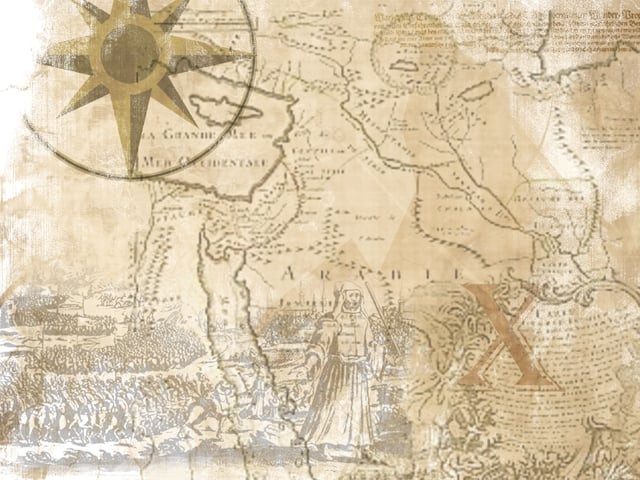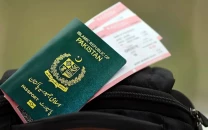Blood ties
No conqueror has managed to tame the unruly, fiercely-independent martial tribes of Afghans.

Some have had to retreat in humiliation while others are “bled to death.” The Afghans, Pakhtuns or Pathans are an ancient people and, if one is to believe their own claim, they are as old as humanity itself. Rough estimates put their population at around 18 million, with the majority of them living in southern and eastern Afghanistan and north-western Pakistan. This makes them perhaps the largest living tribal society in the world, one that still cherishes the customs enshrined in its Pakhtunwali or tribal code.
The origin of the Afghans has puzzled ethnologists, historians and scholars for some time. Reason: the Afghans are distinct both in complexion and in character traits from other groups in the region, such as the Turks, the Mongolians, the Persians, or the Indo-Iranians. Also, in a region where countless nations and peoples have come and gone, it’s difficult to trace their descent. Nonetheless, two theories about their origin are referred to most often: while one establishes their Aryan ancestry, the other, more intriguing theory, traces them as Israelites.
Biblical Beginnings
Among the Afghans a widespread oral tradition says that their origin is from the Benjamin tribe of the family of the biblical King Saul. Afghana, a grandson of Saul, was raised by King David and remained in the royal palace during the reign of Solomon too. About 400 years later, in the days of the Babylonian King Nebuchadnezer, the Afghana family fled to Gur (Ghor province in present Afghanistan).
Sir William Jones, English philologist and scholar of ancient India, also subscribes to this theory. According to him, after the death of King Saul, Nebuchadnezer captured Palestine, and the children of Israel, including Afghana, fled Palestine and settled in Kohistan-i-Ghor, Koh-i-Feroz, Koh-i-Khorasan, Kandhar and Kabul.
Shahid Orakzai, a senior lawyer at the Supreme Court of Pakistan, has come up with a unique evidence to claim Semitic origin. “The Pashtu word ‘Orak’ means ‘lost’ and ‘zai’ can be translated as ‘tribe’,” he says about the Orakzai tribe of the Afghans, to which he himself belongs.
Muslim Metamorphosis
Now the question arises, how did these Jewish people convert to Islam? Namiatullah Haravi, the first historian to have penned down Afghan genealogies during the era of Mughal Emperor Jehangir, has the answer. The descendents of Afghana were 10, writes Haravi in his book Makhzan-i-Afghani (Origin of the Afghans). One of them strayed into Mecca where he met Khalid bin Walid, the fabled Islamic general who also belonged to the Benjamin tribe of Israelites. He invited his Afghan kinsmen settled in Ghor to embrace the new faith. Led by Kais (a descendent of King Saul in 37th generation), a delegation met the Holy Prophet (PBUH) and converted to Islam.
Olaf Caro, the British governor of what is now Khyber-Pakhtunkhwa and tribal areas, also refers to this event in his book, The Pathan. “The Prophet (PBUH) gave Kais the name of Abdur Rashid and predicted that God would make his issue so numerous that they would outlive all other people, and their attachment to the faith would in strength be like constructing a ship which seamen call ‘Bathan’. On this account he conferred upon Abdur Rashid the title of Bathan (the ‘b’ converted to ‘p’ later on).”
Tradition says that Kais married Sara, daughter of Khalid bin Walid and Kais’s three sons — Saraban, Bithan and Ghurghustan — are the ancestors of the various Afghan tribes.
Most Afghans believe in this theory. And they have carefully preserved family trees on their relationship to Israelites. The names of their tribes speak for themselves: the tribe of Harabni is the tribe of Reuben, the Shinwari is Shimeon, the Levani — Levi, Daftani — Naftali, Jaji — Gad, Ashuri — Asher, Afridi — Ephraim, and so on. Interestingly, some of these tribes use Hebrew pronunciation for their names, like Yusufzais, sons of Prophet Joseph, use the Hebrew pronunciation of Aesop instead of the Quranic ‘Yusuf’ or biblical ‘Joseph’.
Weighing the Evidence
Some scholars, however, believe the idea of the Afghans’ Semitic origin was encouraged by their tight tribal structure, their stark code of behaviour, their strikingly Semitic features, their bearded patriarchal appearance, and their predilection for biblical names.
“They (genealogies of the Afghans) were first set down by Persian-speaking chroniclers at the court of Mughal emperors in the early part of the 17th century. The sophisticated Mughal historians, possibly impressed by the same outward signs of Semitic connections that misled the British two hundred years later, apparently made up the descent of the border tribes from the mythical Kais and improvised a connection for Kais with Saul of Israel,” writes James W Spain, US diplomat and scholar, in his book The Way of The Pathans.
But perhaps the theory about the Semitic origin of the Afghans cannot be rejected only because their genealogies were created in the 17th century. Take the Yusufzais, the most blue-blooded of all Pathans — their chronicles are ancient, going back well beyond the Mughal era.
Apart from that, the Afghans to this day maintain Jewish customs preserved from the recesses of their past, notwithstanding their conversion to Islam long ago. Jewish scholars A Avihail and A Brin, in their book Lost Tribes from Assyria, have listed some of the most common customs, which include sidelocks, skullcaps, circumcision within eight days, Talith (prayer shawl), women’s customs (immersion in springs), honouring the father (the son stands up when father arrives), Levirate marriage (marrying a brother’s widow), forbidden foods (horse and camel: while most Muslims sacrifice camels on Eid ul Azha, the Pathans never do so), the code of revenge, the Hebrew amulet (Kamia), blood on the threshold (when a Pathan’s house is built, the blood of a sacrificial animal is smeared on the doorposts and on the gate), and the Star of David symbol is found on every house in Pathan localities.
But Dr Sayed Wiqar Ali Shah, Professor of History at South Asia Institute, University of Heidelberg, Germany, says that similar customs are not enough to prove that Afghans have Jewish origins. “The resemblance of names between the Jews and the Afghans was probably the result of Arab influences in the subcontinent,” he says. “The Holy Prophet (PBUH) himself adopted many customs from the Jews living around him.”
At the same time it is important to note that in a region inhabited by countless nations only the Pathans follow Jewish customs. Why do only the Pathans, from around 21 nations in Afghanistan, look clearly Semitic? Their countenance is lighter than that of other peoples, their noses are long and some of their tribes have blue eyes, particularly the Yusufzais.
“The Pathans’ ancient code of hospitality, Pakhtunwali, by which generosity and protection of guests are paramount, is sufficient proof for some of their Jewish affiliation,” says Shalwa Weil of the Hebrew University of Jerusalem, in her research published some time ago in the Jerusalem Post.
While many scholars are keen to attribute Aryan ancestry to the Pathans, I find it interesting that so many Pathans cling to the ‘Lost Tribe’ theory despite the wave of Islamic extremism and anti-Jewish feeling that is sweeping across the Afghan heartlands. In my eyes, this only strengthens the case of those who believe in a Semitic origin for the Pathans.
Published in The Express Tribune, Sunday Magazine, February 6th, 2011.


















COMMENTS (7)
Comments are moderated and generally will be posted if they are on-topic and not abusive.
For more information, please see our Comments FAQ